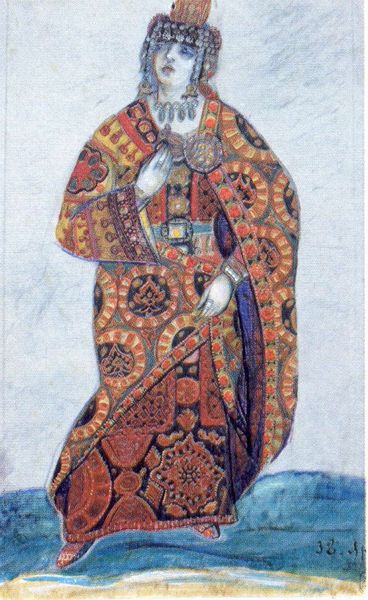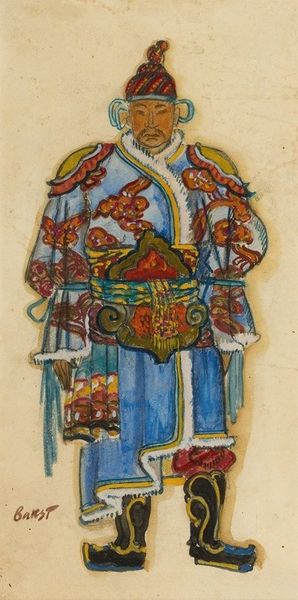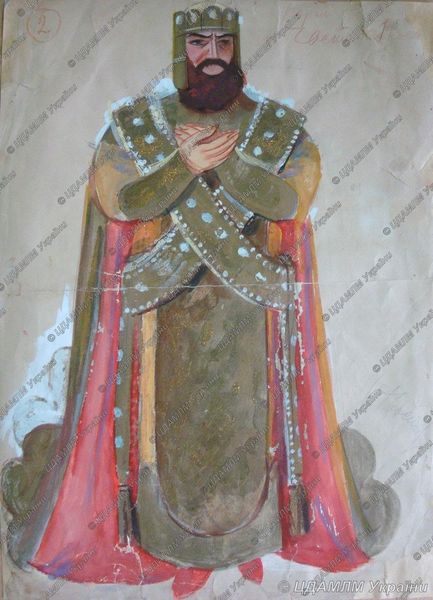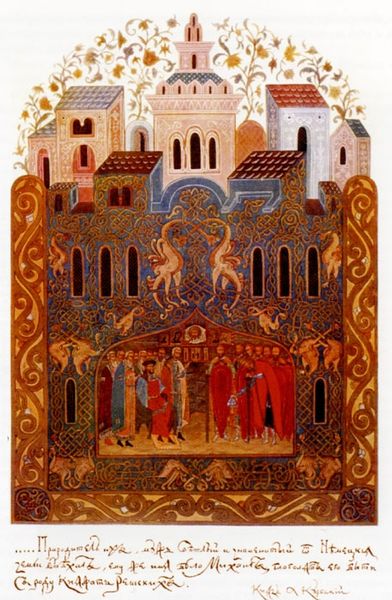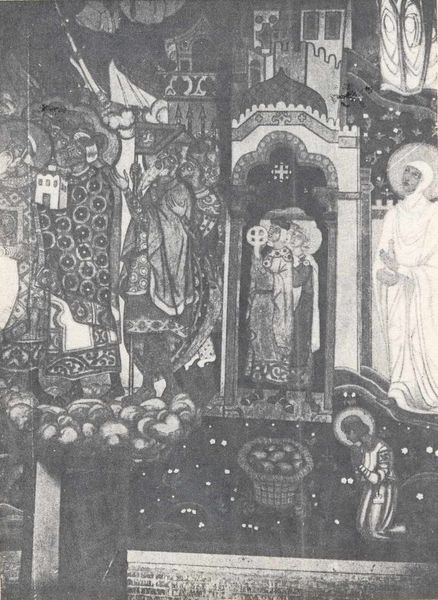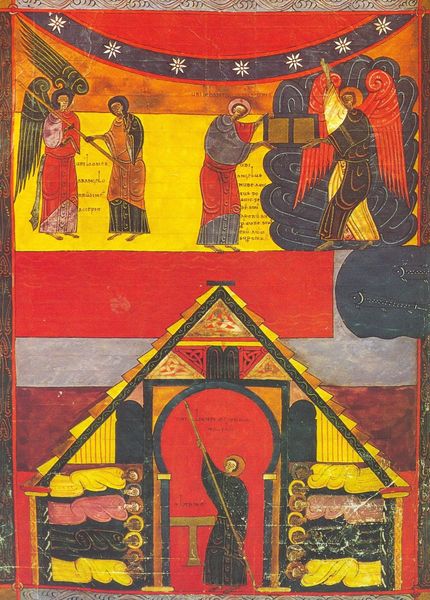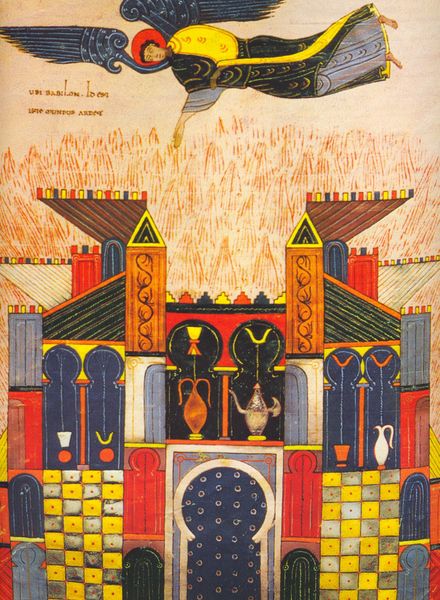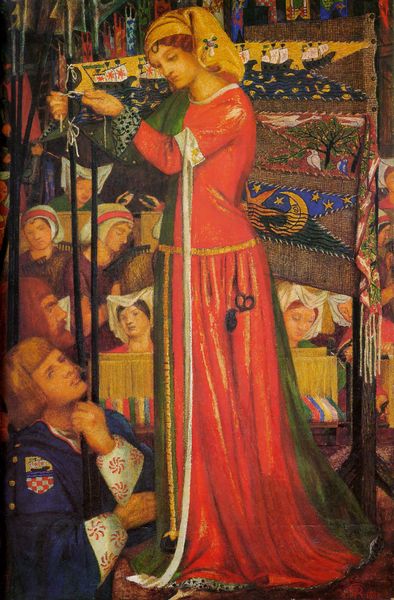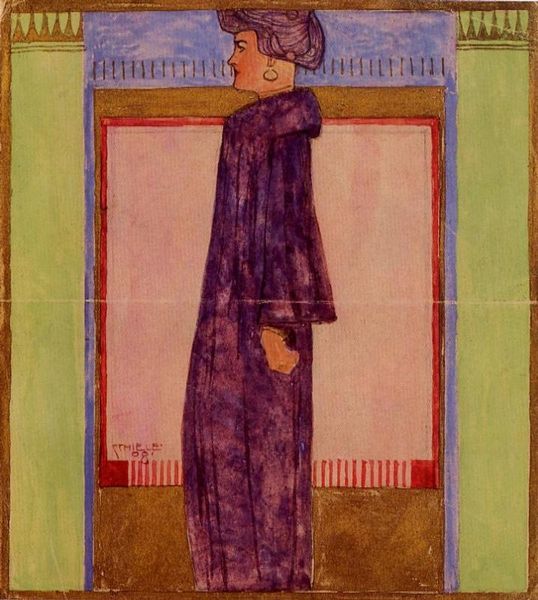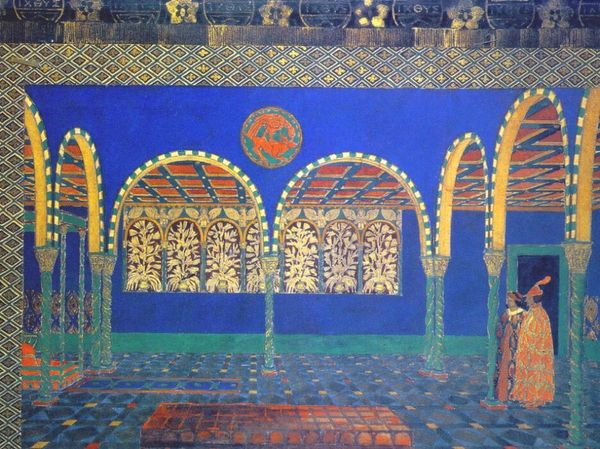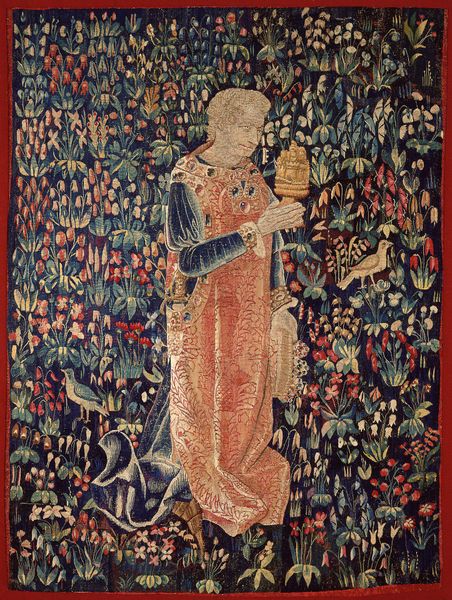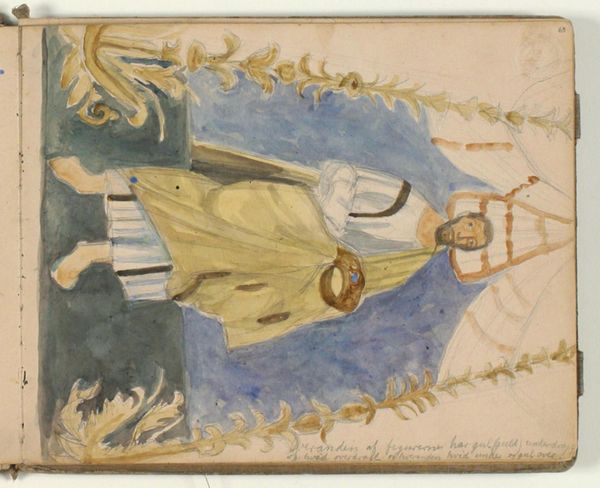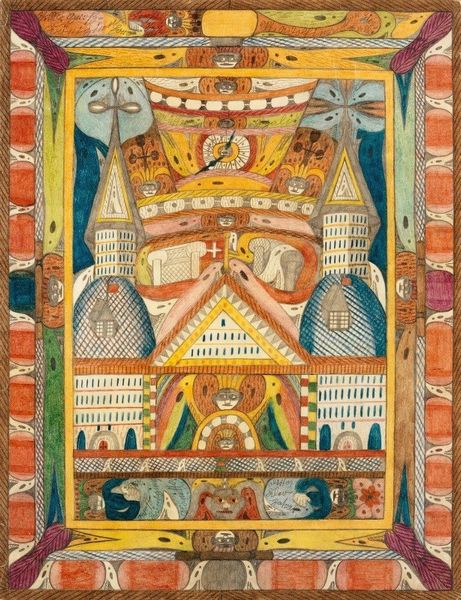
painting, mural
#
portrait
#
allegories
#
medieval
#
painting
#
prophet
#
landscape
#
house
#
figuration
#
male-portraits
#
symbolism
#
russian-avant-garde
#
painting art
#
history-painting
#
mural
#
building
Dimensions: 312 x 200 cm
Copyright: Public domain
Editor: This is Nicholas Roerich's "Householder," painted in 1914. The colors are quite vibrant, and there's a kind of mystical quality to the figure. The whole scene feels very staged, almost theatrical. How do you interpret this work, especially considering the time it was made? Curator: Roerich was deeply engaged with Russian history and folklore, particularly the pre-Christian Slavic cultures. He saw art as a spiritual tool, a way to connect with deeper, ancient truths and advocate for preserving cultural heritage. Consider how the figure, possibly a sage or prophet, stands imposingly amidst these stylized buildings. Do you notice any elements in the landscape or architecture that might suggest specific social or political ideas? Editor: I see a kind of utopian vision, maybe. The buildings seem…well, safe, but also strangely disconnected. The figure seems separate from the buildings themselves. Curator: Precisely. The "Householder" isn't simply a portrait. Think about the anxieties of early 20th-century Russia, on the brink of massive social upheaval and revolution. Roerich, through his art, posed crucial questions: who are we, and what is our responsibility to the past, even as we hurtle towards the future? The figure can be read as the ethical centre or a relic in this landscape. Editor: So, the "Householder" represents tradition standing against or maybe within modernity? Curator: Indeed. And, isn't there also the matter of who gets to define that tradition, and whose voices are privileged? Perhaps he’s not just standing *within* it, but also challenging its perceived notions and limitations. It encourages a continuous re-evaluation. Editor: I didn't consider that. It adds a whole other layer to my reading of this work. Curator: These dialogues are precisely how we disrupt and reshape conventional narratives around art, bringing into play gender, class, and race, prompting ongoing revision. Editor: This conversation has changed the way I look at this piece. It’s not just a mystical figure; it’s about a society in transition. Curator: Absolutely. And remember, engaging with art like this helps us actively reshape history's dominant narratives and make sure that inclusivity is always a guiding principle.
Comments
No comments
Be the first to comment and join the conversation on the ultimate creative platform.
